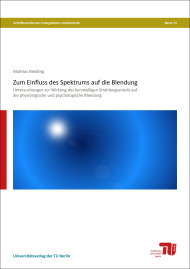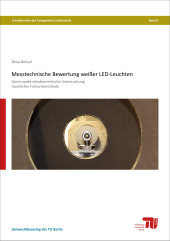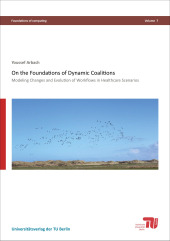Zum Einfluss des Spektrums auf die Blendung
Untersuchungen zur Wirkung des kurzwelligen Strahlungsanteils auf die physiologische und psychologische Blendung

Format: 14,8 x 21,0 cm
Publishing year: 2019
This thesis deals with the influence of glare sources spectral power distribution (SPD) on disability and discomfort glare. While disability glare was measured by contrast threshold, discomfort glare was operationalized by the glare rating on a nine-pointscale. The aim of the studies in this work was to find a physiological explanation for increased glare perception with an increasing amount of short wavelenght radiance. Furthermore, it was investigated, whether an additive composed spectral glare sensitivity of narrow band stimuli is applicable for the prediction on discomfort glare of broadband stimuli. To investigate this issue different investigations were carried out under laboratory conditions. For this purpose a setup with spectral free adjustable glare source was developed. The investigations were performed under street lighting and therefore under mesopic conditions. Broadband and narrow band stimuli were presented to the subjects. The broadband stimuli were separated in synthetic spectra for the specific stimulation of different photoreceptors and realisic spectra and synthetic spectra to confirm the results. Moreover, the influence of the glare sources SPD on pupil diameter was investigated. The glare sources SPD of broadband stimuli showed a significant influence on glare evaluation. Depending on the stimulation of the s-cones glare rating increased up to 1,4 scale-points on the used scale. The glare rating of the narrow band stimuli confirms this result in consideration of the illuminance at the subject´s eye. The spectral glare sensitivity curve figured out in this research was not applicable to predict discomfort glare of broadband stimuli. The glare sources SPD showed no influence on pupil diameter. Also the contrast threshold was not affected by the SPD. The results were confirmed for different spectral surrounding conditions. In order to figure this out it was evaluated that for glare sources presented outside the fovea, mesopic luminances should be apparently used as adaptation luminance. The results of this work were integrated in an existing glare evaluation model.



